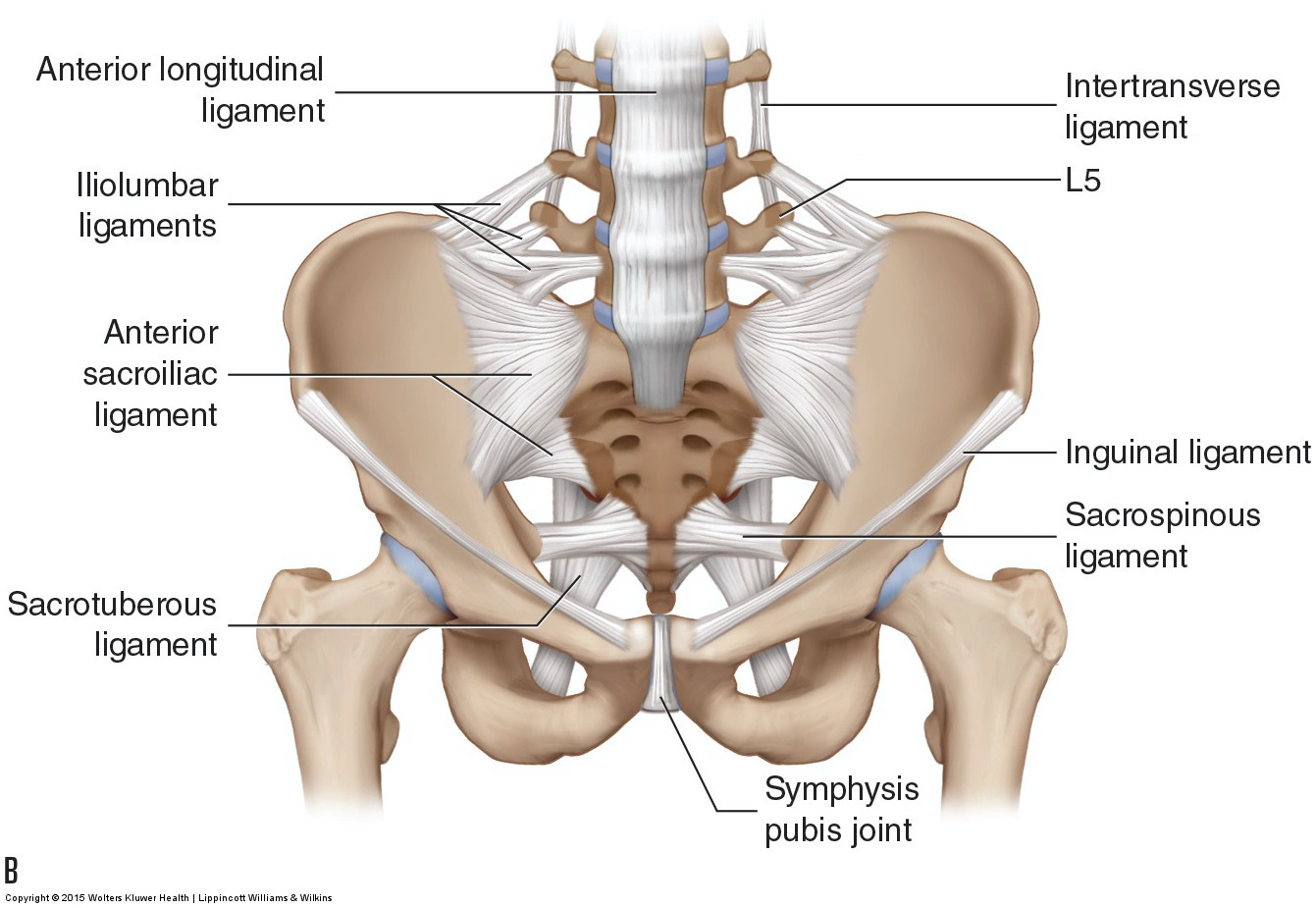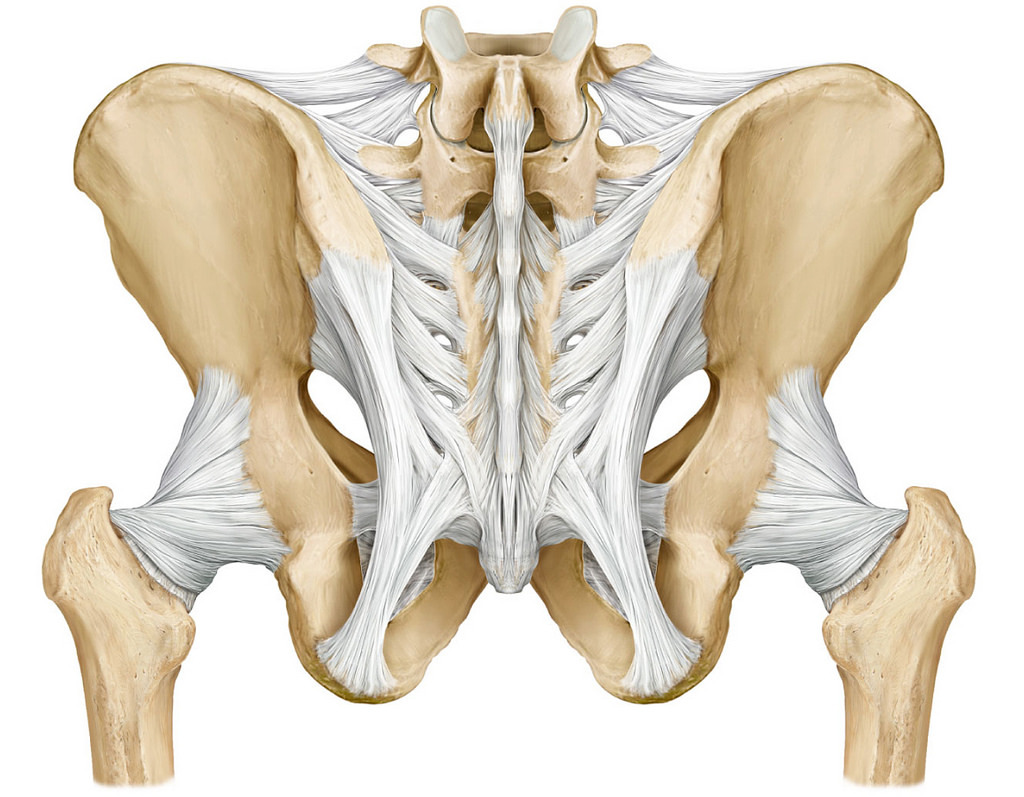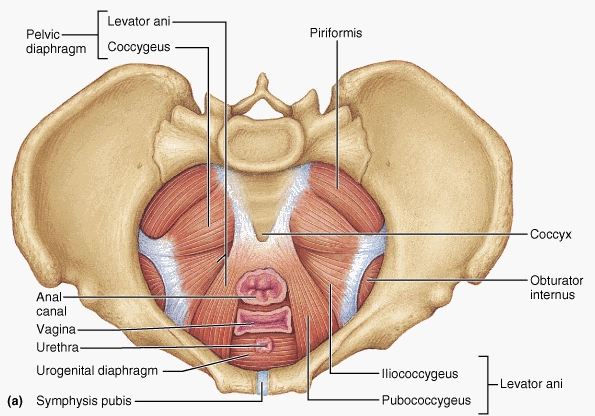Experts have estimated that as many as 80% of the American population suffer from low back pain (LBP). This diagnosis is one of the most commonly treated diagnoses within the physical therapy world. So, what does low back pain have to do with pelvic floor dysfunction (PFD)? Perhaps a lot more than you ever thought.

Your lumbar spine, or low back, is made up of the last 5 vertebrae (L1-L5) in your spinal column. The very last vertebra (L5) then meets up with your sacrum, which is the triangular shaped bone that ends with your tailbone or coccyx. Your sacrum then joins in with your iliums or hip bones that curve around to attach in the front via your pubic symphysis and create your entire pelvic ring.
View of pelvic ligaments from the front

View of pelvic ligaments from the back

View of the pelvic floor from above

The lower spine and pelvic floor are connected by ligaments that surround the pelvis, the pelvic floor muscle attachments themselves (pictured above) and the fascia that encapsulates our organs and muscles. The fascia in our lower abdominal musculature and organs is actually continuous with the fascia in our pelvic floor. The fascia surrounding our deepest core muscle, the transverse abdominis, is also consistent with the fascia and muscles in our low back. When our fascia becomes restricted or inflamed, it can affect the function of our organs, muscles, and ligaments because they no longer have the ability to move and glide freely. You can begin to picture how everything in our body is connected when visualizing these muscular, fascial and ligamentous connections of the deep core and pelvic floor.
Some symptoms of the LBP and PFD relationship can be seen as:
- Urinary urgency/frequency
- Urinary leakage with coughing, sneezing, laughing, etc.
- Constipation or other bowel issues
- Pelvic Organ Prolapse (i.e. cystocele, rectocele, uterine prolapse, urethocele, perineocele)
- Lower abdominal pain
- Testicular, scrotal, or penile pain
- Tailbone pain
- Sacroiliac joint (SIJ) pain
As pelvic floor physical therapists, we are able to assess your low back, hips, lower abdomen, and pelvic floor together. Imbalances are natural and usually occur when we overuse certain muscle groups and greatly reduce activation of the other muscles. As we identify the imbalances, we are able to tune in to what muscles need strengthening and what muscles need lengthening. From here, you begin the journey of re-learning how to appropriately engage and coordinate the many muscles within this space that provide stability and support so you can overcome LBP and optimize pelvic floor function, if it applies.
If you have suffered from LBP for years and gone to traditional physical therapists without the desired results, perhaps they were missing the other key component of your LBP – your pelvic floor! Let us help with addressing this often overlooked area of your body and improve your overall quality of life!

